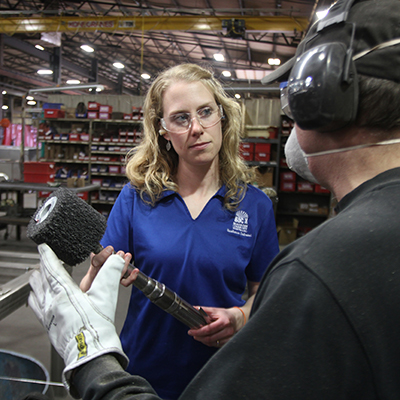healthworks physical exams
707 S UNIVERSITY AVE \ BEAVER DAM WI 53916 \ 920-887-4089
Managing Requirements for Physical Examinations
HealthWORKS provides assistance with management for your physical screening requirements. Our occupational health care professionals will assist in job duties design, rollout, quality control, training and compliance programs.
Key Benefits
- Ensures the right person for the right position
- Reduces worker’s compensation liability and costs
- Reduces risks and mitigation
- Helps manage insurance premium costs
Routine Physical Exams
Also known as Post Offer Physical Exams, these exams are done to determine if an applicant is physically capable of meeting the essential functions of the job, while maintaining the examinee’s privacy and medical confidentiality. A well designed post offer physical exam program results in fewer injuries, lower costs and a better job match.
The exam is performed with attention to the job duties, including physical requirements and potential exposures to hazardous materials. The content of the examination depends on the job and at times, the worksite assessment. For example, jobs that require use of personal protective equipment, such as respiratory protection, often include a pulmonary function test (breathing test) as part of the pre-placement exam. Those involved in interstate trucking require a physical exam and a urinary drug test. We use standard protocols to which the employer and the examining provider agree. Following the examination, the provider provides a written opinion about the person’s suitability for performing the job without health and safety risk to self or others.
Routine Physical Exams include:
- Medical history
- Vitals, blood pressure, height & weight
- Physical exam
- Vision test
- Hearing test (audiogram or whisper test)
- Urinalysis
- Physical exam interpretation
- Coordination of services with other healthcare providers (cardiac clearance, sleep studies, etc.)
Fitness for Duty Exams
Fitness for duty examinations or medical evaluations determine the ability of a worker to return to duty following illness, injury or surgery. Many times employees’ personal physicians may release a patient back to work without understanding the full scope of the employee’s job and potential risk of injury. We evaluate whether the employee is fully able to do the job or if restrictions may be indicated to protect both the employee and employer.
Medical Surveillance Exams
Medical Surveillance Exams are required by OSHA under 29 CFR 1910 for certain types of employers, depending upon the nature of their processes and employee exposures. Therefore, certain Medical Surveillance Examinations such as HAZMAT, HazWoper, Asbestos, Respiratory, Silica and others can be conducted if an employee has specific exposures to chemicals or hazardous materials (lead, asbestos, arsenic, cholinesterase, etc.), loud noises, or other exposures. This ensures they are properly using protective equipment and not suffering from any ill effects to their health because of their workplace exposures.
A Respiratory Exam may be required by OSHA for an employee with job duty requirements to wear a respiratory device from time to time to protect the lungs from exposure to chemicals or particulate matter. In order to safely use a respiratory device, employees need to complete an OSHA respirator questionnaire which a medical provider must review. Respiratory questionnaires are reviewed by an occupational provider and the provider may request pulmonary function testing to measure lung capacity and airflow and/or a basic physical examination as well. If the exam is required due to medical concerns, the employee will be referred for workup for cardiac or pulmonary disease that might place them at risk if breathing was restricted while using that device.
The clearance letter, signed by the physician, is then available to the employer in compliance with the OSHA Respiratory Protection Standard.
